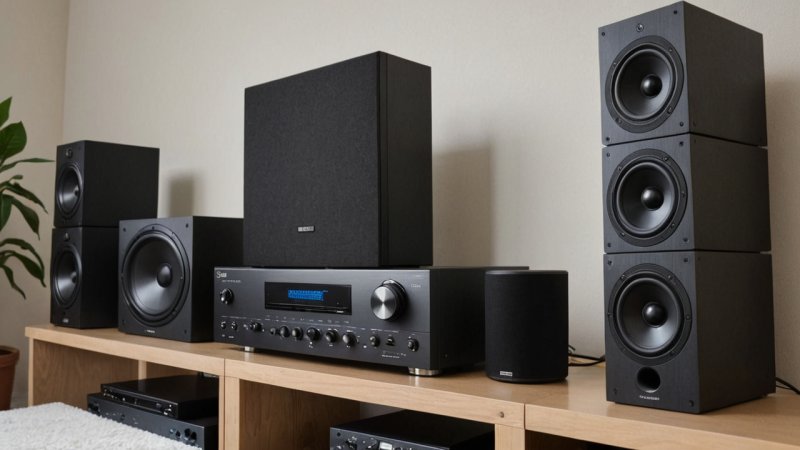Creating an immersive audio experience at home can enhance your enjoyment of movies, music, and gaming. A well-set-up sound system can transform your living space into a personal theater or concert hall. Here, we answer some common questions about setting up a high-quality home sound system to help you achieve the best sound possible.
What components do I need for a high-quality home sound system?
The essential components for a high-quality home sound system include:
- Receiver: Acts as the control center, connecting all your audio and video sources.
- Speakers: The most crucial element for sound quality; consider a home theater setup with multiple speakers.
- Subwoofer: Provides deep bass, enhancing the overall sound experience.
- Source Devices: This includes your TV, gaming console, Blu-ray player, or streaming device.
- Cables: Quality audio cables are important for connecting everything properly.
How do I choose the right speakers for my space?
When selecting speakers, consider the size of your room and your listening preferences. Here are some tips:
- Room Size: Larger rooms may require floor-standing speakers, while smaller spaces might be better suited for bookshelf speakers.
- Speaker Type: Choose between surround sound systems for a cinematic experience or stereo systems for music.
- Sound Quality: Look for speakers with good reviews and listen to them in-store if possible.
How do I arrange my speakers for optimal sound?
Speaker placement is crucial for achieving the best sound quality. Follow these guidelines:
- Front Speakers: Position them at ear level, about 6-10 feet apart, and slightly angled toward the listener.
- Subwoofer: Place it in the corner for more bass but experiment with placement to find the best sound.
- Surround Speakers: Position them above ear level and to the sides or slightly behind the main listening position.
What is the best way to connect my devices?
There are several ways to connect your devices to the receiver, including:
- HDMI: Provides both audio and video in one cable; ideal for modern devices.
- Optical or Coaxial Cables: Good for connecting devices that don’t support HDMI.
- RCA Cables: Useful for older devices; ensure you connect the red and white plugs correctly.
How can I optimize my sound settings?
Once everything is connected, you can optimize your sound settings:
- Calibration: Use your receiver’s automatic calibration feature to adjust speaker levels and distances.
- Equalization: Experiment with the EQ settings to suit your listening preferences.
- Listening Position: Sit in the main listening spot and adjust settings based on your experience.
What additional features should I look for in a home sound system?
Consider these additional features to enhance your listening experience:
- Wireless Connectivity: Look for Bluetooth or Wi-Fi options for easy streaming.
- Multi-Room Capability: Some systems allow you to play music in different rooms simultaneously.
- Smart Integration: Consider systems compatible with smart home devices for voice control.
Setting up a high-quality home sound system can seem daunting, but by understanding the components, proper placement, and connection methods, you can easily create an impressive audio experience. Enjoy your favorite media like never before!






